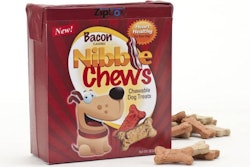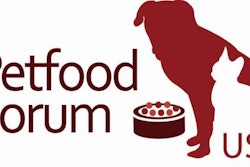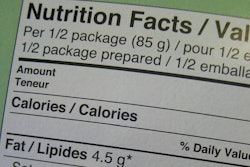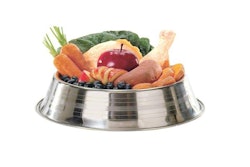
The last year has been a busy one for the pet food industry. 2015 saw the further strengthening of pet humanization, which catapulted specialty and niche-target pet foods further into the spotlight. Innovation became a rallying cry as more pet food manufacturers sought ways to distinguish themselves as specialists in their respective market segments. And regulations, including the US Food and Drug Administration’s Food Safety Modernization Act (FSMA), became the backdrop for an even larger push for transparency and accountability at every level of the industry. Of course, pet food sales continue to rise each year (for US retail sales trends, see Figure 1), and according to the pet food industry, we haven’t seen the last of these topics. As 2016 begins, it’s time to take another look at what the experts think is ahead.
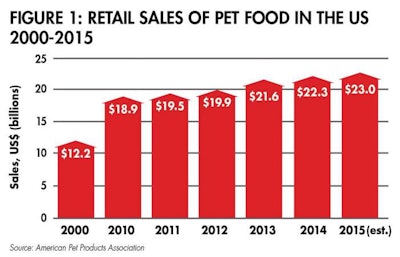
While retail sales growth has slowed in recent years, largely due to economic challenges, there’s no doubt that the pet food industry is resilient and can count on a continuing trend of overall growth.
The freeze-dried, raw and fresh segments of specialty pet food were significant parts of industry conversation in 2015, and according to experts their importance will continue into 2016—particularly when it comes to making those ideas palatable to a larger consumer base. “[2015] saw a number of new brands entering the raw-infused kibble segment,” said Maria Lange, business group director for GfK. “Merrick Backcountry, Natural Balance Wild Pursuit and Trufood are just a few of the major manufacturers who have entered this emerging premium pet food category. Raw-infused kibble SKUs let pet owners explore the ‘raw’ category (safely!) for just a few more cents per pound, rather than committing fully to a 100% raw diet that can cost up to US$32 a pound. Raw-infused kibble products have grown quickly in terms of distribution and in-store sales; however, the big ‘boom’ has not yet been seen.”
As the segment continues to garner interest among consumers, it will become more prominent on the industry’s radar. “We will see continued proliferation of offerings in freeze-dried raw as competitors seek to garner a foothold in this emerging growth category,” said Bryan Jaffe, managing director at Cascadia Capital LLC.
The grain-free pet food market is a more mature trend that the industry nevertheless expects to continue into 2016. The segment is still posting consistent year-over-year growth: 24–25%, according to GfK data. Part of that growth likely comes from consumer perception, say industry experts, and the responsibility in 2016 remains to deliver what consumers want while keeping pet health in mind. “Grain free is still going strong, and it appears to be holding the interest of the pet-loving pet parents who believe it is better than whole grains,” said Tom Willard, PhD, with TRW Consulting Services LLC. “The challenge for the [pet food] nutritionist is to try and make [products] as healthful as possible.”
Consumers will remain engaged in feeding their pets the best possible food in 2016, according to Euromonitor. That engagement comes as a result of consumer education, and the industry can expect to respond to demands for more ingredient transparency, clearer labeling and more efficient, sustainable processes. “Ingredients’ quality and provenance will continue to assume a key role in the industry,” said Paula Flores, global head of pet care research for Euromonitor.
Flores isn’t the only one who spoke about the need for accessible ingredient information. “I think that, on the whole more, emphasis will be put on communicating pet food ingredients and their reliability,” said Marcel Blok, owner of Change Stranamics. “Positioning elements for pet foods will be transparency, sustainability and ingredient origin. I think it is fair to say that when we talk about humanization of our treatment of pets, there will not be a big difference between the trends in human food and pet foods. In other words, standards for the owner also apply to the pet.”
Pet humanization, of course, is by now a well-known trend driver in the industry—one that is expected to carry on into 2016. “We’re likely to see the humanization of pets continue,” said Travis Conway, managing director of SDR Ventures. “For some young couples and empty nesters, pets, especially dogs and cats, are now seen as ‘replacement kids’ (see Figure 2 for US pet ownership trends). As a result, food trends that apply to humans are extending to pets. Treating pets as members of the family drives pet owners to spend more money on their animals with premium food and treats, specialized services and advanced veterinary care.”
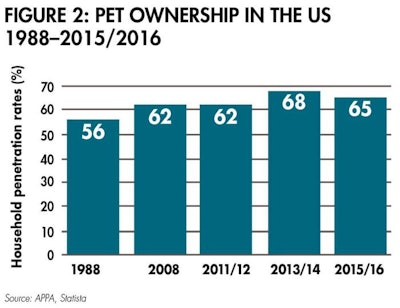
US household penetration rates for pet ownership have been in the 60%+ range since 1988 (seen here), even though growth has slowed in recent years. “From 2015 to 2020, the pet population is forecast to grow at an annualized rate of 1.9%,” said Travis Conway, managing director of SDR Ventures. “Pet ownership rates tend to drop among people once they hit retirement age, and Baby Boomers will be crossing that line over the next decade.”
Culinary crossovers may be one result of this continued humanization, according to David Sprinkle, research director for Packaged Facts. “Watch for the following ingredient trends for pet food and treat product introductions: boar as an exotic protein, tying in with wilderness pet food trends; eggs and egg whites, sometimes with a breakfast flavors spin, as cholesterol recedes from the list of nutritional culprits for humans; and bananas as fruit content for pet treats, including with peanut butter,” said Sprinkle. “At the same time, meat cookery terms such as ‘braised’, ‘roasted’, ‘seared’ and ‘pulled’, proliferating on restaurant menus, will do the same in moist pet foods positioned on meat content and flavor indulgence.”
Pet food labeling will also continue its importance in 2016, beginning with the need for consumer confidence and tying back to growing food trends. “Consumers' need for healthy and trustworthy pet food offers will continue to fuel the demand for cleaner labels and local sourcing,” said Bertrand De Launay, Diana Pet Food’s marketing and innovation director. “This should also ensure that ‘free from’ food alternatives (such as grain free, gluten free, sugar free, lactose free, etc.) meet growing success in 2016.”
Naturally, this set of consumer-knowledge-based trends ties into another timely and ongoing issue in the pet food industry: regulations. From labeling to the ever-present FSMA, industry experts weighed in on what they’ll be focusing on in the coming year.
“The requirement for labels for all dog and cat foods (including treats and supplements) to bear a proper calorie content statement becomes fully enforceable by the end of 2016,” said David Dzanis, DVM, PhD, DACVN, CEO of Regulatory Discretion Inc. “Those manufacturers who have yet to adapt their labeling need to get on it with due haste. All dog growth and all life stage product labels will need to amend their nutritional adequacy statements to indicate whether or not the life stage designation includes large size puppies. While new products will have one year, and existing products two years from the date of publication to amend their formulas and/or labeling as needed, it is not too soon for manufacturers to begin the process of changing over the affected labels.”
Further, the implementation of FSMA, which has been ongoing for some time now, will continue to gear up, according to experts. “The pet food industry is dynamic and growing with a tremendous amount of innovation and investment,” said Matt Nichols, account manager for pet food at Neogen Corporation. “The industry has been preparing for the Food Safety Modernization Act [for years], and this will continue with implementation starting in 2016.”
Such implementation may cause challenges for the industry, according to Willard with TRW Consulting. “As these regulations and [Good Manufacturing Practices] are implemented, I believe that the greatest impact will be on new product development as well as private label manufacturers, which generally lack the regulatory and technical staff to cope fully with the new regulations,” he said. “I see recalls continuing to increase as food safety concerns continue to be in the public’s sights.”
Challenges or otherwise, the pet food industry seems well prepared for what’s to come. From the latest consumer-driven needs to regulatory mandates, experts seem to agree that 2016 will be just as busy as 2015 was—with just as many opportunities.
Global regional growth in 2016: China
China is a current hot topic in the pet food industry, and it looks as though 2016 will continue that trend. “It is my estimate that China will represent 25% of global growth by 2020,” said Marcel Blok, owner of Change Stranamics. According to Blok, Southeast Asia in general, and China in particular, will be a solid place to answer the question, “Where can I find new business?”
In 2015, China pet food sales reached CNY5.3 billion (US$820 million) offline and CNY2.8 billion (US$430 million) online, said GfK’s Pushan Tagore, vice president of global marketing for pet care. And while the year-over-year growth for offline sales was 4% from 2014 to 2015, it was 36% for online sales. “The China pet market was developed much later than western countries, but people there pay more and more attention to it and sales volumes always keep growing,” said Tagore.
That growth represents opportunity, according to SDR Ventures. “China is a region with a lot of opportunity for the pet industry,” said Travis Conway, managing director of SDR. “As of [October 2014], only 7% of Chinese households had a dog and 2% had a cat, compared to 36.5% and 30.4% in the US. Pet owners in China have also shown an affinity for premium products.”
The non-GMO trend in 2016
As non-GMO (genetically modified organism) claims become increasingly prominent in the human food world, it’s no surprise that the trend has spilled over into pet food. And according to industry experts, it will continue to do so. “Until recently, brands have been using different claims on their packaging regarding ‘no GMO’—but none were scientifically, legally approved,” said Maria Lange, business group director for GfK. “More brands are getting certified by the NON-GMO project (legal, scientific approval). It is hard to say how big this will get, but it is a notable human food trend, so this will possibly splash over more than it already has to the pet world.”
The regulatory results of this (and other higher end, “free of”) trend may produce additional challenges as well as opportunities for all involved. “I believe ‘hormone free’, ‘human grade’ and ‘GMO free’ will spark new product development,” said Tom Willard, PhD, with TRW Consulting Services LLC. “This will be a challenge with AAFCO (the Association of American Feed Control Officials) attempting to keep up with these growing trends.”
At a glance: pet food consumer technologies in 2016
Several pet food industry experts spoke on the rise of technology in the pet food industry: specifically, how consumers are using technology to meet their pets’ needs. “The term ‘connected pet’ will take on new meaning as data derived from tracking devices and tech-enabled treaters and feeders will begin to be harvested to drive food recommendations and auto replenishment,” said Bryan Jaffe, managing director for Cascadia Capital LLC. “This is very similar to the arc we have seen in the human side where activity trackers and calorie monitors drive behavioral change for the connected consumer.”
Fitness trends on the human side have similarly moved in to the pet industry. “Buying specialized fitness tools and paying for owner-dog fitness classes will help drive the overall pet industry,” said Travis Conway, managing director of SDR Ventures. “Fitness monitors are also becoming popular.”
As always, convenience and technology have combined on the pet side, as price-conscious consumers look to apps for savings opportunities. “Continued online penetration into retail sales is inevitable, and Internet and mobile apps are especially well-suited to ‘info-centric’ superpremium and alternative pet food and nutrition products,” said David Sprinkle, research director for Packaged Facts. “Pet food manufacturers not strategizing around the auto subscription/home delivery trend for pet food may become Amazon delivery truck road kill, at least in terms of younger and urban consumers. In addition, savvy marketers will increasingly deploy mobile apps that combine a substantive pet health and wellness mission with auto subscription, digital coupon and promotion, and loyalty/reward program features.”



